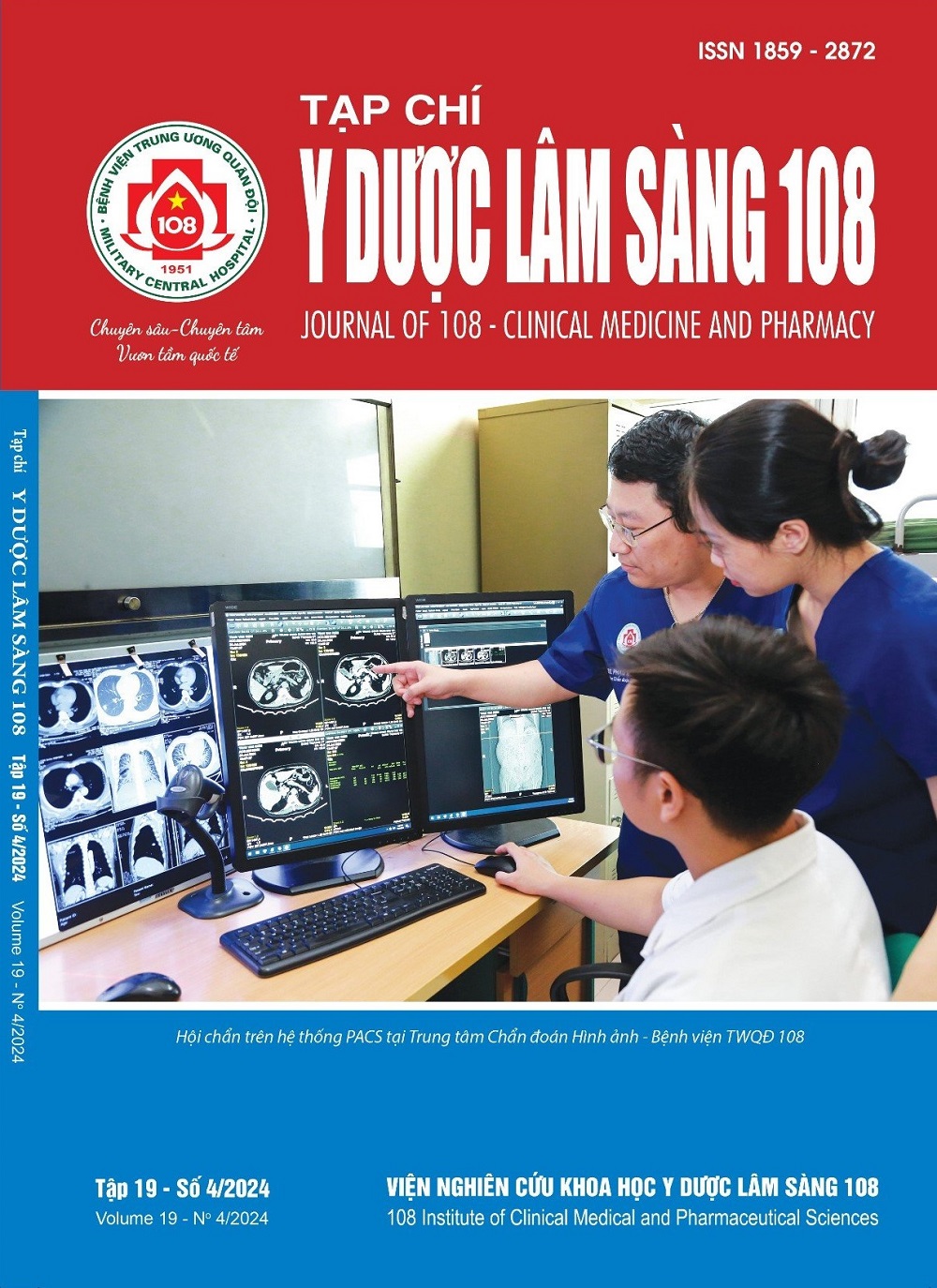The initial assessment of microRNA-21 expression levels in peripheral blood in gastric cancer in Vietnamese patients
Main Article Content
Keywords
Abstract
Objective: This study aimed to refine the evaluation process of miR-21 expression levels in the peripheral blood of Vietnamese individuals and to preliminarily assess its value in supporting the diagnosis of gastric cancer (GC). Subject and method: In 2023, 35 GC patients (Patient group) and 35 non-GC individuals (Control group) were examined and treated at the 108 Military Central Hospital. MiR-21 circulating freely in peripheral blood was detected in patients using a real-time PCR technique employing a specific stem-loop primer set; expression levels were assessed using the Livak formula. The diagnostic support value of miR-21 for GC was evaluated through the area under the receiver operating characteristic curve (AUC) and sensitivity-specificity (compared to CEA, CA19-9, and CA72-4). Result: The expression level of miR-21 was determined using a qPCR technique employing the miR-internal standard gene. The results indicated that miR-21 expression in the SC group was twice as high as in the control group. Moreover, miR-21 exhibited better diagnostic support for SC compared to CEA, CA19-9, and CA72-4, as it had the highest AUC (0.64 vs. 0.48 vs. 0.57 vs. 0.47, respectively). Conclusion: MicroRNA-21 expression is elevated in Vietnamese patients with GC, and it may be utilized as a potential biomarker to diagnose the disease. However, further in-depth and extensive studies are warranted.
Article Details
References
2. GLOBOCAN (2020) The cancer rates in Vietnam.
3. Bộ Y tế (2020) Hướng dẫn chẩn đoán và điều trị ung thư dạ dày.
4. Mitchell PS, Parkin RK, Kroh EM, Fritz BR, Wyman SK, Pogosova-Agadjanyan EL et al (2008) Circulating microRNAs as stable blood-based markers for cancer detection. Proc Natl Acad Sci U S A 105(30): 10513-10518.
5. Tat Trung N, Duong DC, Tong HV, Hien TTT, Hoan PQ, Bang MH et al (2018) Optimisation of quantitative miRNA panels to consolidate the diagnostic surveillance of HBV-related hepatocellular carcinoma. PLoS One 13(4):0196081.
6. Ueda T, Volinia S, Okumura H, Shimizu M, Taccioli C, Rossi S et al (2010) Relation between microRNA expression and progression and prognosis of gastric cancer: A microRNA expression analysis. Lancet Oncol 11(2): 136-146.
7. So JBY, Kapoor R, Zhu F, Koh C, Zhou L, Zou R et al (2021) Development and validation of a serum microRNA biomarker panel for detecting gastric cancer in a high-risk population. Gut 70(5): 829-837.
8. Wu K, Li L, Li S (2015) Circulating microRNA-21 as a biomarker for the detection of various carcinomas: An updated meta-analysis based on 36 studies. Tumour Biol 36(3): 1973-1981.
9. Sierzega M, Kaczor M, Kolodziejczyk P, Kulig J, Sanak M, Richter P (2017) Evaluation of serum microRNA biomarkers for gastric cancer based on blood and tissue pools profiling: The importance of miR-21 and miR-331. Br J Cancer 117(2): 266-273.
10. Livak KJ, Schmittgen TD (2001) Analysis of relative gene expression data using real-time quantitative PCR and the 2 (-Delta Delta C(T)) Method. Methods 25(4): 402-408.
11. Song J, Bai Z, Han W, Zhang J, Meng H, Bi J, et al (2012) Identification of suitable reference genes for qPCR analysis of serum microRNA in gastric cancer patients. Dig Dis Sci 57(4): 897-904.
 ISSN: 1859 - 2872
ISSN: 1859 - 2872
